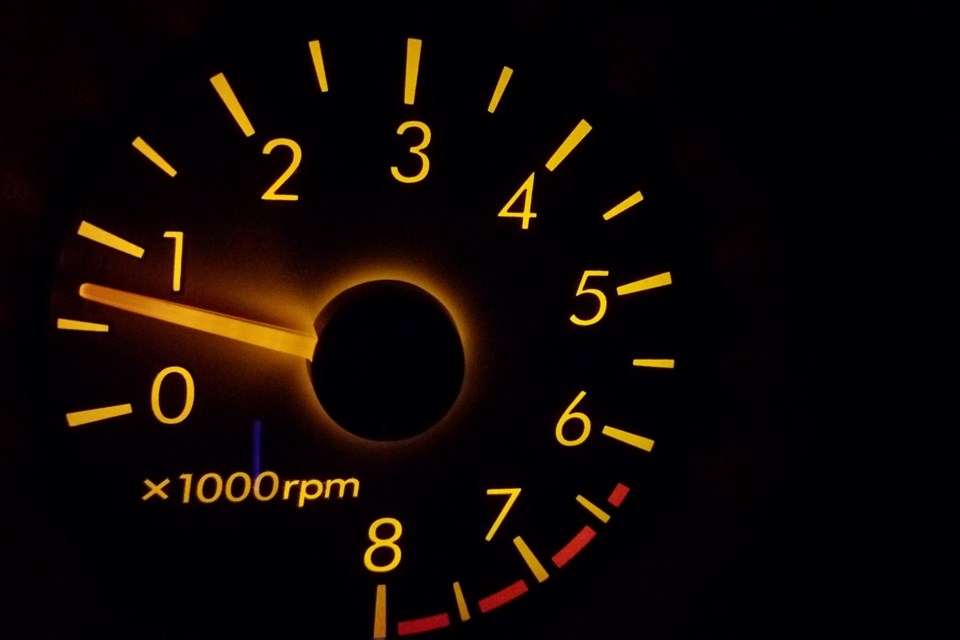A longstanding effort to make Greater Sudbury a more pedestrian-friendly city appears to be coming to a head, with the city in the midst of several significant steps forward.
Between efforts to reduce speed limits, prioritize sidewalks, install traffic-calming infrastructure and automated enforcement devices, the city has been gaining traction.
So described Ward 9 Coun. Deb McIntosh, who chairs the city’s operations committee which has been dealing with the city’s 3,600 lane kilometres of roadway.
“All of us get a lot of complaints about speeding through residential neighbourhoods,” she said, adding that a leading concern at community meetings has consistently been about people speeding on certain stretches of road.
“I’m just one councillor, but we all have those, so it’s a constant thread – a constant complaint that comes in.”
The latest step the committee has taken is approving the creation of a business case calling for automated speed traps, which could be introduced in the city as early as next year.
“To become the most pedestrian-friendly, you have to share the road with pedestrians and cyclists and vehicles, and part of that is the traffic needs to slow down … to at least what the speed limit is posted at,” McIntosh said.
Whatever incarnation of city council is elected on Oct. 24 will make a final decision on speed traps next year, but city administration already has an idea of where they might go. The top 10 roads, in order and based on the total number of offences, are:
- Walford Road (Regent Street to Paris Street)
- Loach’s Road
- Howey Drive (Van Horne Street to Bellevue Avenue)
- Kelly Lake Road (Copper Street to Southview Drive)
- Long Lake Road (near Kivi Park)
- Valleyview Road (MR 80 to Belisle Drive)
- Bancroft Drive (The Kingsway and Bellevue Avenue)
- Barrydowne Road (Lasalle Boulevard and Lillian Boulevard)
- Desmarais Road
- Gary Avenue
Meanwhile, another automated traffic enforcement tool, six red light cameras, have already been installed and are currently in the testing phase. In emailed correspondence with Sudbury.com this week, a city spokesperson clarified that the public will be informed before the city begins issuing tickets.
The red light cameras will exclusively issue tickets for motorists running red lights, while the proposed automated speed traps will exclusively issue tickets for motorists exceeding the speed limit.
At that time, Sudbury.com will publish more information on how they will operate.
These ‘enforcement’ tools join ‘engineering’ and ‘education’ in rounding out a trifecta of “e,” McIntosh said, pointing to education as ongoing and significant steps being made in the engineering department recently.
“All three things have to come together in order to have success,” she said.
On the engineering front, this year will find traffic-calming bollards installed along 10 of the highest-ranked locations in the city. The bollards consist of a series of three flexible posts placed at the sides and centre of affected roads as a means of narrowing the driving space and thereby reducing the speed of vehicles. Each trio of posts are spaced 150 metres apart along the roadway and are installed once spring street sweeping and line painting wraps up and are removed by Oct. 31, weather permitting.
The city is also mapping out a new design for city streets throughout the municipality to better incorporate active transportation, for which two public consultation meetings have been scheduled (June 28 at 12 p.m. and June 29 at 7 p.m. Click here for more information and to fill out a survey).
A pilot program is rolling out in one neighbourhood this year which would see speed limits dropped to 40 km/h from their current 50 km/h. Next year’s city council will consider expanding the program.
In May, the city updated its sidewalk scoring matrix to better prioritize the construction of sidewalks near built-up commercial areas in outlying communities, which were not adequately ranked in the existing formula.
It’s all coming together, McIntosh said, crediting the province for some of the city’s recent success by making changes in legislation allowing them greater control over what they can do with city streets.
In 2007, city council passed a resolution to become the most pedestrian-friendly city in Ontario by 2015, the city’s Community Energy and Emissions Plan (2019) includes establishing a 35 per cent active transportation mode share by 2050, and city council adopted a Complete Streets Policy in 2018, pledging the city to ensure all types of users are accommodated on every street.
This consistent direction of city council in favour of active transportation has had numerous impacts on how the city proceeds with infrastructure projects, McIntosh said, pointing to the Brady Street underpass by the The Northbury Hotel and Conference Centre as an example.
Several years ago, city council opted against spending an additional $1 million to include sidewalks in the underpass, which has resulted in a dangerous situation for some pedestrians.
“It probably seemed like a lot of money back then, but you can’t undo that now,” she said. “It’s like that until you replace the bridge.
“That would just never happen now because of the progress we’ve made toward active transportations and roads for all.”
Tyler Clarke covers city hall and political affairs for Sudbury.com.
